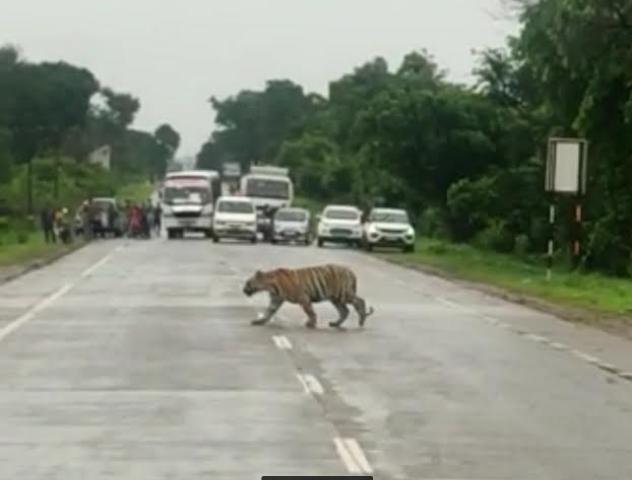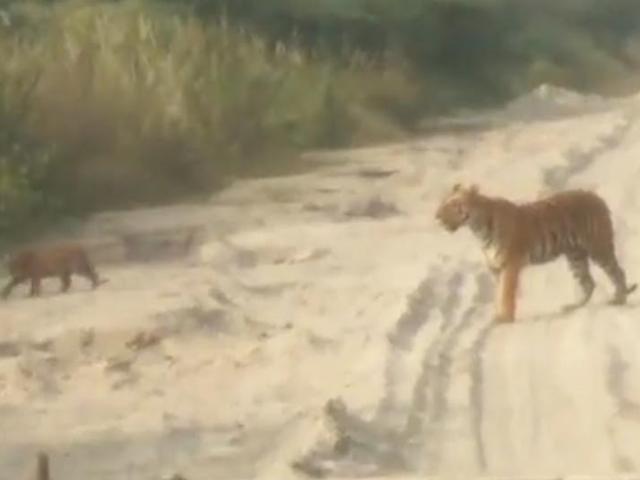100 Tigers, Fragmented Forest And Human Pressure
Also read: Coal Mining All Set To Threaten Tiger Corridors Around Tadoba
The man-animal conflict figures speak for itself as in over three years (2016-2019), 34 human deaths and 304 cases of human injuries were officially reported in wild animal attacks in Brahmapuri division alone. The government also paid Rs 16.52 crore compensation which includes for cattle kills and crop damage. The conflict continues and people are restless .The forest is more or less in fragmented blocks adjoining TATR with paddy fields in between. Of the 750 villages in Brahmapuri, 449 are forested. “There is a population of over six lakhs in Brahmapuri .A large number of them visit regularly in forests for timber extraction and grazing of cattle. “ Over 40 % cases of tiger-human conflict take place when villagers go inside forest to extract fuel wood. About 25 % cases happen while they take animals for grazing into the adjoining jungles ”, a department official explains. Though there is a scheme to provide subsidized LPG cylinders where the state government makes 75 % payment, villagers continue to be dependent on fuel wood. Recommendations for an elaborate mitigation plan of an expert committee are yet to be made public for implementation.
Resident Tigers of Power Plant in Chandrapur
Home to 5 tigers, Chandrapur Super Thermal Power Station or CSTPS located in Chandrapur and is connected to famous TATR through a corridor of coal mines that is thickly covered with Prosopis plant species. Durgapur mines are located barely 1.2 kms away from the buffer of TATR. The power plant has become a tiger source with the fourth generation of the big cats growing up inside its sprawling premises. This thick vegetation, result of plantation drive by the power station and coal mines long back, has become a hideout of the tigers. Adequate prey base in the form of stray cattle and wild boars, substantial tree cover and a perennial nullah ( a broad drainage) passing through the CSTPS help meet all the basic needs of the resident tigers, experts explain.
Also read: Monsoon Magic At Bandhavgarh Tiger Reserve
The coal for the power plant is sourced from Durgapur and Padmapur Collieries of Western Coalfields Limited .Almost 30% of the Maharashtra's power supply is sourced from this CSTPS. Tigers roam freely inside the power station area sharing the premises with 10,000 people , mostly families of the workers. “ The leftovers in the residential area of the plant attract wild boars and stray cattle and they become tigers' prey”, an official of the power plant explained. There is no dearth of food for the tigers as there are estimated 2,000 to 4,000 stray cattle inside the CSTPS area and their number has grown substantially after a ban on slaughter of cows and their progeny. “ There was a tigress with 5 cubs and another tigress with a female sub-adult. Her male cub was captured earlier this year after it mauled a plant worker on February 16.”
Forest and Wildlife Low on Government Priority List
Also read: Stone Pelting on Tiger Cubs :Kanha Pench Corridor Becomes Conflict Zone
In July 2019, the then minister of state for Environment and Forest Babul Supriyo had told the parliament that the ministry gave permission to cut 1.09 crore trees for development purposes between 2014 and 2019. A senior official in the ministry of environment ,forest and climate change said “ Low on government priority list and lack of political will , majority of the states have expressed inability to expand even the buffer zones. Besides,number of projects which require felling of lakhs of trees are being cleared on regular basis. Relocation of villagers is also getting complicated day by day, so what is the solution”. He said, “The camera trap assessment has shown tiger presence beyond forest areas. We have asked all the states with a healthy tiger population to prepare a man-animal conflict and tiger mitigation plan. This will be compiled and released with the upcoming tiger census report,” he said. All tigers straying out cannot be captured and housed in rescue centres.
By Deshdeep Saxena





Comments
Post a Comment